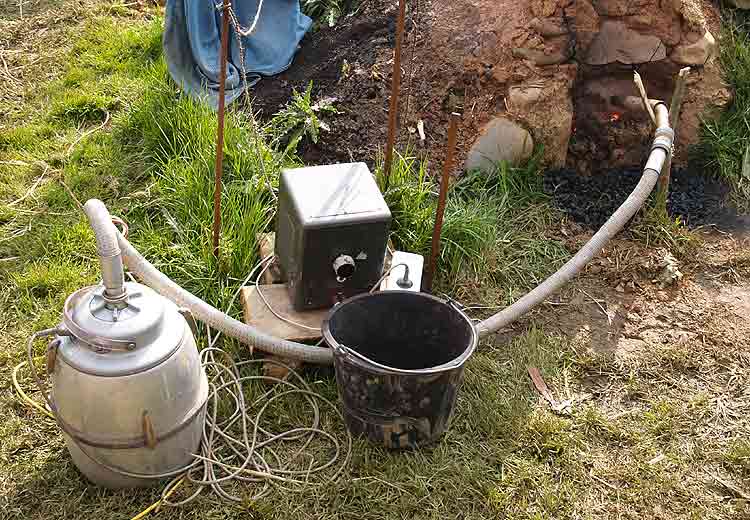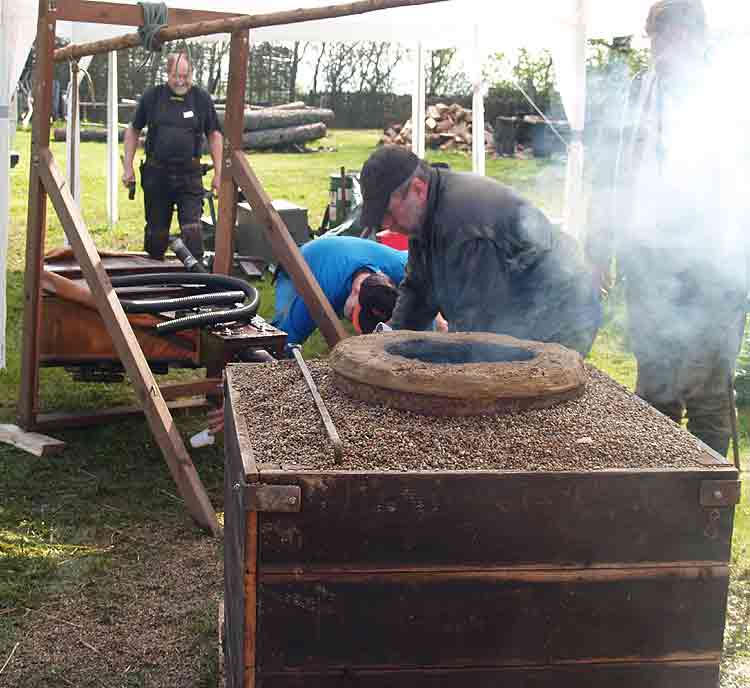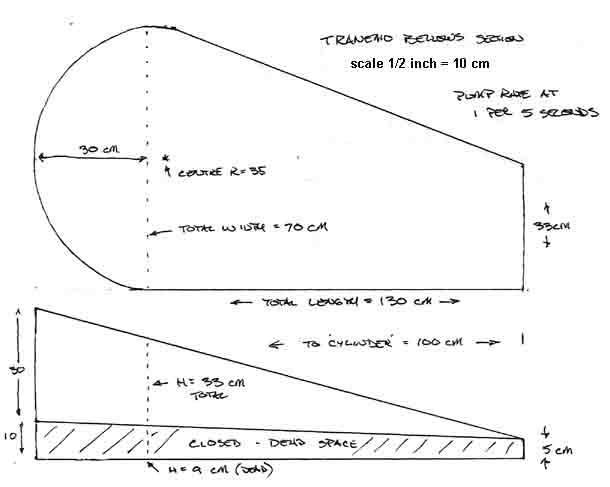One of the things I had really wanted to do at Heltborg was get some numbers on air volumes. This is one of the most poorly recorded of all the variables that various experimenters have to work with. Partially this is due to the extremely wide range of types of air delivery systems individual teams make use of.
I had made a serious attempt to record actual outputs using my small hand held aneomometer. This gives a reading in kilometers per hour, through a standard 2.5 cm diameter hole. A little math converts that number to litres per minute. Unfortunately, it soon became apparent that the meter was not functioning correctly. The measurements were proving too inconsistent (the same power reading would produce quite different air flows on repeating the test).
The Danes especially all use pretty much the same commercial vacuum cleaner blowers. (Now the comments about 'vacuum blower smelters' makes more sense!)
 This image is of the equipment Michael Nissen lent me for my own three smelt experiments. The 'Nilfisk' blower is hooked up through a variable transformer to control motor speed. Remember that all the power in Denmark is 220 volt. Measurements are made using an output power meter on the downstream side.
This image is of the equipment Michael Nissen lent me for my own three smelt experiments. The 'Nilfisk' blower is hooked up through a variable transformer to control motor speed. Remember that all the power in Denmark is 220 volt. Measurements are made using an output power meter on the downstream side.
The other air system I was quite interested in measuring was the 'traditional' great bellows (double bag system) used by the team from Tranemo. I only have this image of the bellows, taken on Tuesday as the team was still setting up. (I had shot a long video sequence of the bellows in use during a later smelt. My camcorder died on me half way through the week - and the tape is jammed inside unable to be removed. Don't buy a CANON!)
I did make measurements of the system in use:

Earlier, Neil had set up one of those 'Google Spreadsheets' which allows users to plug in a series of basic measurements and get a * theoretical estimate * of air volume produced. (Go HERE to see the table)
I had good numbers on both the dimensions and the pump rates. I did have to make some WAGs on the two efficiency numbers. The loss at the valves was considered to be minimal. This bellows used rigid flap valves set on the underside of the bottom plate.
Still, the potential air volume from this bellows is in the high end - a potential at 1380 litres per minute (at the roughly 12 strokes per minute rate I observed.) Given a fairly standard 25 % working efficiency from the theoretical number, that brings the working volume produced to about 1035 LpM.
The smelter itself was 30 cm diameter, so using the Sauder & Williams method numbers (1.2 - 1.5 L/cm2) the required air volume is projected to 850 - 1050 LpM.
Now of course, in use the variable that iron masters pay more attention to is actual charcoal consumption rates. How fast you burn a standard measure of fuel. Hopefully at some point, the individual smelt data reports for the various Heltborg experiments will become available so there can be a comparison made between the air rates and the burn rates.




















No comments:
Post a Comment